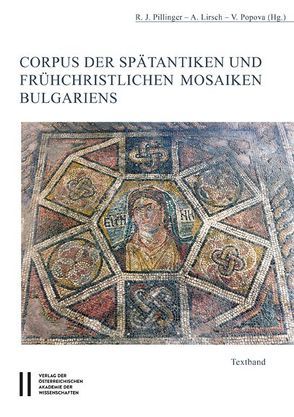
Ziel der vorliegenden Sammelpublikation ist die vollständige Vorlage der auf heutigem bulgarischem Staatsgebiet erhaltenen bzw. dokumentierten spätantiken und frühchristlichen Mosaiken. Sie wurde von der Arbeitsgruppe Christliche Archäologie unter der früheren Leitung von Renate Pillinger gemeinsam mit Vanja Popova vom Institut für Kunstwissenschaft der Bulgarischen Akademie der Wissenschaften in Sofia initiiert und in Kooperation mit bulgarischen Regionalmuseen und Wissenschaftern erstellt. Die Veröffentlichung erfolgt vor dem Hintergrund der Grabungsbefunde. Analog zum bereits 1999 erschienenen Wandmalerei-Corpus ergibt sich die Reihung der einzelnen Denkmäler nach geografischen Gesichtspunkten. Zu jedem Mosaik wird jeweils der Fundort angegeben, der Fundkontext mit einer kurzen Beschreibung des zugehörigen Gebäudes oder Raumes und wer es wann freilegte. Abgehandelt werden Erhaltungszustand, Lage und Gestalt, Technik, Gliederung sowie figürliche und ornamentale Motive. Auf die ermittelten Vergleichsbeispiele folgen kurzgefasste Kommentare mit dem Versuch einer Interpretation. Am Ende jedes Beitrags steht die vollständige Bibliografie oder der Hinweis „unpubliziert“. Soweit möglich, sind Abbildungen und Pläne beigegeben.
Die Grabungsbefunde legen nahe, dass die Mosaikproduktion im 6. Jahrhundert stark abnahm. Derzeit ist kein einziges Paviment bekannt, welches nach der Mitte des 6. Jahrhunderts entstanden ist. Bei den 24 auf uns gekommenen spätantiken Mosaikinschriften handelt es sich um 19 griechische und fünf lateinische. Wie in der vorangegangenen Epoche stammen die meisten Mosaike des 4. Jahrhunderts nach wie vor aus dem profanen Bereich, repräsentativen Wohnhäusern und öffentlichen Gebäuden (vor allem Badeanlagen). Im Zuge des aufstrebenden Christentums wandelt sich das Bild jedoch gegen Ende des Jahrhunderts zugunsten der frühchristlichen Sakralbauten, deren Bodenmosaiken nun jene der privaten Wohnkomplexe quantitativ um das Doppelte übertreffen. Waren die ersten frühchristlichen Kirchen vor allem mit Steinplattenböden versehen, so erlebt deren musivische Ausstattung in der zweiten Jahrhunderthälfte einen ungeahnten Aufschwung. Die zu dieser Zeit dominierenden streng geometrischen Kompositionen eignen sich gut als Dekor für die langrechteckigen Naoi und begleiten den Einzug des Klerus vom Kircheneingang bis zum Altar durch ihre sich rhythmisch wiederholende Bodengestaltung. Wo man in der Apsis und/oder dem Presbyterium Bodenmosaiken verlegte, sind manchmal mit dem christlichen Glauben verbundene figurale Motive ausgeführt. Ferner ist der den Klerikern vorbehaltene Bereich in mehreren Fällen mit einem Opus-sectile-Paviment bedeckt.
Ab der zweiten Hälfte des 4. Jahrhunderts kann man kaum formale und kompositorische Unterschiede zwischen Mosaiken frühchristlicher und profaner Gebäude feststellen, was in der Tätigkeit derselben Mosaikwerkstätten in beiden Bereichen begründet ist. Der Purismus der anikonisch-geometrischen Dekorationen ging aber sicherlich vor allem von den Sakralbauten aus.
Aktualisiert: 2023-06-21
> findR *
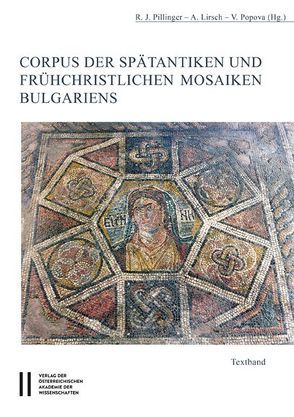
Ziel der vorliegenden Sammelpublikation ist die vollständige Vorlage der auf heutigem bulgarischem Staatsgebiet erhaltenen bzw. dokumentierten spätantiken und frühchristlichen Mosaiken. Sie wurde von der Arbeitsgruppe Christliche Archäologie unter der früheren Leitung von Renate Pillinger gemeinsam mit Vanja Popova vom Institut für Kunstwissenschaft der Bulgarischen Akademie der Wissenschaften in Sofia initiiert und in Kooperation mit bulgarischen Regionalmuseen und Wissenschaftern erstellt. Die Veröffentlichung erfolgt vor dem Hintergrund der Grabungsbefunde. Analog zum bereits 1999 erschienenen Wandmalerei-Corpus ergibt sich die Reihung der einzelnen Denkmäler nach geografischen Gesichtspunkten. Zu jedem Mosaik wird jeweils der Fundort angegeben, der Fundkontext mit einer kurzen Beschreibung des zugehörigen Gebäudes oder Raumes und wer es wann freilegte. Abgehandelt werden Erhaltungszustand, Lage und Gestalt, Technik, Gliederung sowie figürliche und ornamentale Motive. Auf die ermittelten Vergleichsbeispiele folgen kurzgefasste Kommentare mit dem Versuch einer Interpretation. Am Ende jedes Beitrags steht die vollständige Bibliografie oder der Hinweis „unpubliziert“. Soweit möglich, sind Abbildungen und Pläne beigegeben.
Die Grabungsbefunde legen nahe, dass die Mosaikproduktion im 6. Jahrhundert stark abnahm. Derzeit ist kein einziges Paviment bekannt, welches nach der Mitte des 6. Jahrhunderts entstanden ist. Bei den 24 auf uns gekommenen spätantiken Mosaikinschriften handelt es sich um 19 griechische und fünf lateinische. Wie in der vorangegangenen Epoche stammen die meisten Mosaike des 4. Jahrhunderts nach wie vor aus dem profanen Bereich, repräsentativen Wohnhäusern und öffentlichen Gebäuden (vor allem Badeanlagen). Im Zuge des aufstrebenden Christentums wandelt sich das Bild jedoch gegen Ende des Jahrhunderts zugunsten der frühchristlichen Sakralbauten, deren Bodenmosaiken nun jene der privaten Wohnkomplexe quantitativ um das Doppelte übertreffen. Waren die ersten frühchristlichen Kirchen vor allem mit Steinplattenböden versehen, so erlebt deren musivische Ausstattung in der zweiten Jahrhunderthälfte einen ungeahnten Aufschwung. Die zu dieser Zeit dominierenden streng geometrischen Kompositionen eignen sich gut als Dekor für die langrechteckigen Naoi und begleiten den Einzug des Klerus vom Kircheneingang bis zum Altar durch ihre sich rhythmisch wiederholende Bodengestaltung. Wo man in der Apsis und/oder dem Presbyterium Bodenmosaiken verlegte, sind manchmal mit dem christlichen Glauben verbundene figurale Motive ausgeführt. Ferner ist der den Klerikern vorbehaltene Bereich in mehreren Fällen mit einem Opus-sectile-Paviment bedeckt.
Ab der zweiten Hälfte des 4. Jahrhunderts kann man kaum formale und kompositorische Unterschiede zwischen Mosaiken frühchristlicher und profaner Gebäude feststellen, was in der Tätigkeit derselben Mosaikwerkstätten in beiden Bereichen begründet ist. Der Purismus der anikonisch-geometrischen Dekorationen ging aber sicherlich vor allem von den Sakralbauten aus.
Aktualisiert: 2023-06-19
> findR *
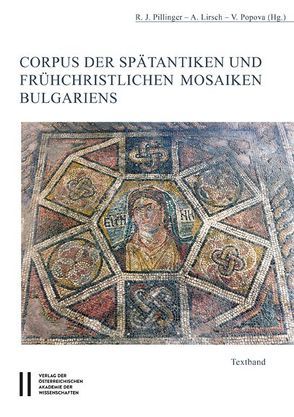
Ziel der vorliegenden Sammelpublikation ist die vollständige Vorlage der auf heutigem bulgarischem Staatsgebiet erhaltenen bzw. dokumentierten spätantiken und frühchristlichen Mosaiken. Sie wurde von der Arbeitsgruppe Christliche Archäologie unter der früheren Leitung von Renate Pillinger gemeinsam mit Vanja Popova vom Institut für Kunstwissenschaft der Bulgarischen Akademie der Wissenschaften in Sofia initiiert und in Kooperation mit bulgarischen Regionalmuseen und Wissenschaftern erstellt. Die Veröffentlichung erfolgt vor dem Hintergrund der Grabungsbefunde. Analog zum bereits 1999 erschienenen Wandmalerei-Corpus ergibt sich die Reihung der einzelnen Denkmäler nach geografischen Gesichtspunkten. Zu jedem Mosaik wird jeweils der Fundort angegeben, der Fundkontext mit einer kurzen Beschreibung des zugehörigen Gebäudes oder Raumes und wer es wann freilegte. Abgehandelt werden Erhaltungszustand, Lage und Gestalt, Technik, Gliederung sowie figürliche und ornamentale Motive. Auf die ermittelten Vergleichsbeispiele folgen kurzgefasste Kommentare mit dem Versuch einer Interpretation. Am Ende jedes Beitrags steht die vollständige Bibliografie oder der Hinweis „unpubliziert“. Soweit möglich, sind Abbildungen und Pläne beigegeben.
Die Grabungsbefunde legen nahe, dass die Mosaikproduktion im 6. Jahrhundert stark abnahm. Derzeit ist kein einziges Paviment bekannt, welches nach der Mitte des 6. Jahrhunderts entstanden ist. Bei den 24 auf uns gekommenen spätantiken Mosaikinschriften handelt es sich um 19 griechische und fünf lateinische. Wie in der vorangegangenen Epoche stammen die meisten Mosaike des 4. Jahrhunderts nach wie vor aus dem profanen Bereich, repräsentativen Wohnhäusern und öffentlichen Gebäuden (vor allem Badeanlagen). Im Zuge des aufstrebenden Christentums wandelt sich das Bild jedoch gegen Ende des Jahrhunderts zugunsten der frühchristlichen Sakralbauten, deren Bodenmosaiken nun jene der privaten Wohnkomplexe quantitativ um das Doppelte übertreffen. Waren die ersten frühchristlichen Kirchen vor allem mit Steinplattenböden versehen, so erlebt deren musivische Ausstattung in der zweiten Jahrhunderthälfte einen ungeahnten Aufschwung. Die zu dieser Zeit dominierenden streng geometrischen Kompositionen eignen sich gut als Dekor für die langrechteckigen Naoi und begleiten den Einzug des Klerus vom Kircheneingang bis zum Altar durch ihre sich rhythmisch wiederholende Bodengestaltung. Wo man in der Apsis und/oder dem Presbyterium Bodenmosaiken verlegte, sind manchmal mit dem christlichen Glauben verbundene figurale Motive ausgeführt. Ferner ist der den Klerikern vorbehaltene Bereich in mehreren Fällen mit einem Opus-sectile-Paviment bedeckt.
Ab der zweiten Hälfte des 4. Jahrhunderts kann man kaum formale und kompositorische Unterschiede zwischen Mosaiken frühchristlicher und profaner Gebäude feststellen, was in der Tätigkeit derselben Mosaikwerkstätten in beiden Bereichen begründet ist. Der Purismus der anikonisch-geometrischen Dekorationen ging aber sicherlich vor allem von den Sakralbauten aus.
Aktualisiert: 2023-06-19
> findR *
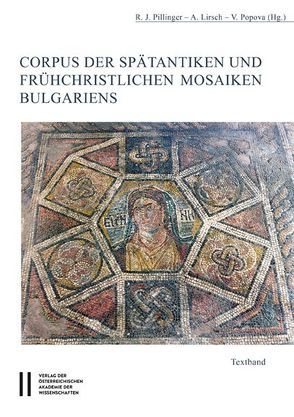
The goal of this publication is the complete, up-to-date presentation of the late antique and early Christian mosaics obtained or documented in Bulgaria. A first volume on wall paintings has already been published by the ÖAW in 1999. The current volume comprises a collection of publications resulting from a cooperation between Bulgarian regional museums and scholars, and was initiated by the Christian Archaeology research group, at that time under the leadership of Renate Pillinger with the Bulgarian mosaic specialist Vanja Popova of the Institute for Art of the Bulgarian Academy of Sciences (BAN) in Sofia. The publication starts with the background of the excavations. Like the already-published corpus on wall paintings, here too the sequence of individual monuments emerges from geographical situation. For each mosaic, the place where it was found is specified, as well as the find-context with a short description of the building or room in which it was found, who excavated it and when. Its state of preservation, the placement and form, technique, arrangement as well as figural and ornamental motifs are all treated. In the case of those comparative examples that have been identified, brief comments are offered with an attempt at interpretation. At the end of each contribution, a complete bibliography or the indication as “unpublished” appears – which suggests the need for an initial publication. Images and plans are included as far as is possible.
The excavation finds directly suggest a strong decline in the production of mosaics in the 6th century. No paviment that originates after the middle of the 6th century is known to this day. Of the 24 late antique mosaic inscriptions that have come to us, 19 are in Greek and five in Latin. As in the preceding era, most of the 4th century mosaics still come from the secular domain, distinguished residences and public buildings (above all bath complexes). As part of growing Christianity the picture, however, changes around the end of the 4th century in favor of the early Christian sacred buildings, whose floor mosaics now doubly surpass the quantity of those in private residential complexes. The first early Christian churches were largely furnished with stone slab flooring, but in the second half of the 4th century a mosaic décor has an unforeseen boom. The dominant mosaics of this time period are strictly geometrical compositions; these are well-suited for the long rectangular naoi and with their rhythmic, repeated floor composition, suitably escort the entrance of the clerics from the church entry to the altar. Sometimes figural motifs connected with the Christian faith are incorporated into floor mosaics laid out in the apse and/or the presbyterium. In addition, in many cases the area reserved for the clergy is laid out with opus sectile paviment. After the second half of the 4th century one can hardly distinguish between formal and compositional differences between mosaics of early Christian and secular buildings, which results from the operation of the same mosaic workshops for both spheres. Without a doubt, the purism of aniconic-geometrical decoration especially sprung from the sacred buildings.
Aktualisiert: 2023-05-12
> findR *
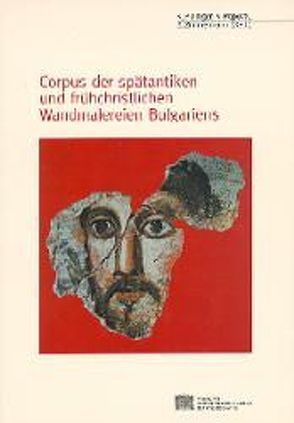
Das vorliegende Buch ist der erste Band eines Gesamtcorpus der spätantiken und frühchristlichen Wandmalereien und Mosaiken Bulgariens. Es enthält alle Wandmalereien dieses Zeitraumes vom Gebiet des heutigen Bulgarien. Bei den Denkmälern handelt es sich um Kirchen, Gräber und Profanbauten. Zu finden sind alle in der Spätantike gängigen Dekorationschemata und Bildmotive. Häufig - vor allem in Kirchen - ist die malerische Imitation reicher marmorverkleideter Wände. Es gibt hier aber auch Zeugnisse figürlicher Malereien, z.B. die Gesichter von Zar Krum und die Reste der prachtvollen erzählerischen Zyklen der sog. Roten Kirche in Peru‘tica. Die insgesamt 35 im Corpus aufgenommenen spätantiken Gräber mit Malereien weisen ein breites Spektrum an Bildmotiven auf. So kommt das Thema des Grabinhabers mit seiner Dienerschaft außer in dem bekannten Grab von Silistra auch in den Gräbern von Plovdiv und Ossenovo vor. Häufig zu finden ist eine neutrale Dekoration mit Vögeln, Streublumen- und Girlandenmuster, und schließlich gibt es unterschiedlichst gestaltete Grabausstattungen mit gemalten Kreuzen, wobei hier vor allem die Nekropole von Serdica hervorsticht. Zum ersten Mal sind alle bekannten Gräber mit Bemalung dieser großen Nekropole mit vollständiger Bibliographie gemeinsam vorgelegt. Darüberhinaus können erstmalig die Fotos der um die Jahrhundertwende entstandenen Aquarellkopien ihrer Malereien veröffentlicht werden, ebenso zwei, erst 1989 gefundene Gräber. Der Textteil wird durch verschiedene Register und einen umfangreichen Abbildungsteil ergänzt, der in bislang noch nie erreichter Ausführlichkeit die Malereizeugnisse dieses Landes dokumentiert.
Aktualisiert: 2023-05-12
> findR *
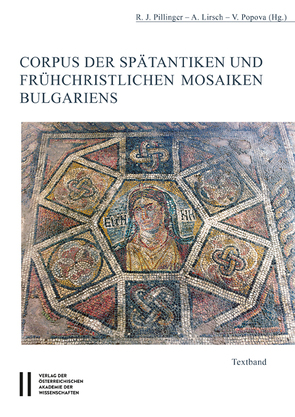
The goal of this publication is the complete, up-to-date presentation of the late antique and early Christian mosaics obtained or documented in Bulgaria. A first volume on wall paintings has already been published by the ÖAW in 1999. The current volume comprises a collection of publications resulting from a cooperation between Bulgarian regional museums and scholars, and was initiated by the Christian Archaeology research group, at that time under the leadership of Renate Pillinger with the Bulgarian mosaic specialist Vanja Popova of the Institute for Art of the Bulgarian Academy of Sciences (BAN) in Sofia. The publication starts with the background of the excavations. Like the already-published corpus on wall paintings, here too the sequence of individual monuments emerges from geographical situation. For each mosaic, the place where it was found is specified, as well as the find-context with a short description of the building or room in which it was found, who excavated it and when. Its state of preservation, the placement and form, technique, arrangement as well as figural and ornamental motifs are all treated. In the case of those comparative examples that have been identified, brief comments are offered with an attempt at interpretation. At the end of each contribution, a complete bibliography or the indication as “unpublished” appears – which suggests the need for an initial publication. Images and plans are included as far as is possible.
The excavation finds directly suggest a strong decline in the production of mosaics in the 6th century. No paviment that originates after the middle of the 6th century is known to this day. Of the 24 late antique mosaic inscriptions that have come to us, 19 are in Greek and five in Latin. As in the preceding era, most of the 4th century mosaics still come from the secular domain, distinguished residences and public buildings (above all bath complexes). As part of growing Christianity the picture, however, changes around the end of the 4th century in favor of the early Christian sacred buildings, whose floor mosaics now doubly surpass the quantity of those in private residential complexes. The first early Christian churches were largely furnished with stone slab flooring, but in the second half of the 4th century a mosaic décor has an unforeseen boom. The dominant mosaics of this time period are strictly geometrical compositions; these are well-suited for the long rectangular naoi and with their rhythmic, repeated floor composition, suitably escort the entrance of the clerics from the church entry to the altar. Sometimes figural motifs connected with the Christian faith are incorporated into floor mosaics laid out in the apse and/or the presbyterium. In addition, in many cases the area reserved for the clergy is laid out with opus sectile paviment. After the second half of the 4th century one can hardly distinguish between formal and compositional differences between mosaics of early Christian and secular buildings, which results from the operation of the same mosaic workshops for both spheres. Without a doubt, the purism of aniconic-geometrical decoration especially sprung from the sacred buildings.
Aktualisiert: 2023-05-12
> findR *
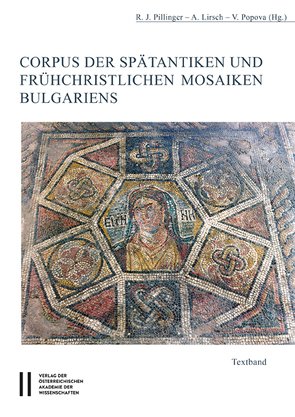
The goal of this publication is the complete, up-to-date presentation of the late antique and early Christian mosaics obtained or documented in Bulgaria. A first volume on wall paintings has already been published by the ÖAW in 1999. The current volume comprises a collection of publications resulting from a cooperation between Bulgarian regional museums and scholars, and was initiated by the Christian Archaeology research group, at that time under the leadership of Renate Pillinger with the Bulgarian mosaic specialist Vanja Popova of the Institute for Art of the Bulgarian Academy of Sciences (BAN) in Sofia. The publication starts with the background of the excavations. Like the already-published corpus on wall paintings, here too the sequence of individual monuments emerges from geographical situation. For each mosaic, the place where it was found is specified, as well as the find-context with a short description of the building or room in which it was found, who excavated it and when. Its state of preservation, the placement and form, technique, arrangement as well as figural and ornamental motifs are all treated. In the case of those comparative examples that have been identified, brief comments are offered with an attempt at interpretation. At the end of each contribution, a complete bibliography or the indication as “unpublished” appears – which suggests the need for an initial publication. Images and plans are included as far as is possible.
The excavation finds directly suggest a strong decline in the production of mosaics in the 6th century. No paviment that originates after the middle of the 6th century is known to this day. Of the 24 late antique mosaic inscriptions that have come to us, 19 are in Greek and five in Latin. As in the preceding era, most of the 4th century mosaics still come from the secular domain, distinguished residences and public buildings (above all bath complexes). As part of growing Christianity the picture, however, changes around the end of the 4th century in favor of the early Christian sacred buildings, whose floor mosaics now doubly surpass the quantity of those in private residential complexes. The first early Christian churches were largely furnished with stone slab flooring, but in the second half of the 4th century a mosaic décor has an unforeseen boom. The dominant mosaics of this time period are strictly geometrical compositions; these are well-suited for the long rectangular naoi and with their rhythmic, repeated floor composition, suitably escort the entrance of the clerics from the church entry to the altar. Sometimes figural motifs connected with the Christian faith are incorporated into floor mosaics laid out in the apse and/or the presbyterium. In addition, in many cases the area reserved for the clergy is laid out with opus sectile paviment. After the second half of the 4th century one can hardly distinguish between formal and compositional differences between mosaics of early Christian and secular buildings, which results from the operation of the same mosaic workshops for both spheres. Without a doubt, the purism of aniconic-geometrical decoration especially sprung from the sacred buildings.
Aktualisiert: 2023-02-23
> findR *
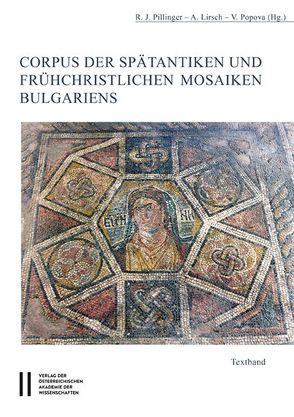
The goal of this publication is the complete, up-to-date presentation of the late antique and early Christian mosaics obtained or documented in Bulgaria. A first volume on wall paintings has already been published by the ÖAW in 1999. The current volume comprises a collection of publications resulting from a cooperation between Bulgarian regional museums and scholars, and was initiated by the Christian Archaeology research group, at that time under the leadership of Renate Pillinger with the Bulgarian mosaic specialist Vanja Popova of the Institute for Art of the Bulgarian Academy of Sciences (BAN) in Sofia. The publication starts with the background of the excavations. Like the already-published corpus on wall paintings, here too the sequence of individual monuments emerges from geographical situation. For each mosaic, the place where it was found is specified, as well as the find-context with a short description of the building or room in which it was found, who excavated it and when. Its state of preservation, the placement and form, technique, arrangement as well as figural and ornamental motifs are all treated. In the case of those comparative examples that have been identified, brief comments are offered with an attempt at interpretation. At the end of each contribution, a complete bibliography or the indication as “unpublished” appears – which suggests the need for an initial publication. Images and plans are included as far as is possible.
The excavation finds directly suggest a strong decline in the production of mosaics in the 6th century. No paviment that originates after the middle of the 6th century is known to this day. Of the 24 late antique mosaic inscriptions that have come to us, 19 are in Greek and five in Latin. As in the preceding era, most of the 4th century mosaics still come from the secular domain, distinguished residences and public buildings (above all bath complexes). As part of growing Christianity the picture, however, changes around the end of the 4th century in favor of the early Christian sacred buildings, whose floor mosaics now doubly surpass the quantity of those in private residential complexes. The first early Christian churches were largely furnished with stone slab flooring, but in the second half of the 4th century a mosaic décor has an unforeseen boom. The dominant mosaics of this time period are strictly geometrical compositions; these are well-suited for the long rectangular naoi and with their rhythmic, repeated floor composition, suitably escort the entrance of the clerics from the church entry to the altar. Sometimes figural motifs connected with the Christian faith are incorporated into floor mosaics laid out in the apse and/or the presbyterium. In addition, in many cases the area reserved for the clergy is laid out with opus sectile paviment. After the second half of the 4th century one can hardly distinguish between formal and compositional differences between mosaics of early Christian and secular buildings, which results from the operation of the same mosaic workshops for both spheres. Without a doubt, the purism of aniconic-geometrical decoration especially sprung from the sacred buildings.
Aktualisiert: 2023-02-23
> findR *
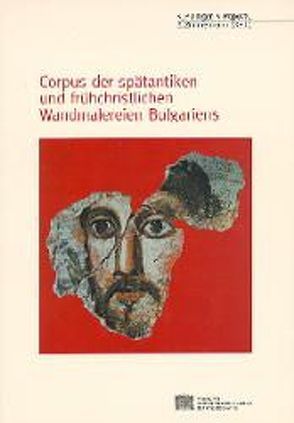
Das vorliegende Buch ist der erste Band eines Gesamtcorpus der spätantiken und frühchristlichen Wandmalereien und Mosaiken Bulgariens. Es enthält alle Wandmalereien dieses Zeitraumes vom Gebiet des heutigen Bulgarien. Bei den Denkmälern handelt es sich um Kirchen, Gräber und Profanbauten. Zu finden sind alle in der Spätantike gängigen Dekorationschemata und Bildmotive. Häufig - vor allem in Kirchen - ist die malerische Imitation reicher marmorverkleideter Wände. Es gibt hier aber auch Zeugnisse figürlicher Malereien, z.B. die Gesichter von Zar Krum und die Reste der prachtvollen erzählerischen Zyklen der sog. Roten Kirche in Peru‘tica. Die insgesamt 35 im Corpus aufgenommenen spätantiken Gräber mit Malereien weisen ein breites Spektrum an Bildmotiven auf. So kommt das Thema des Grabinhabers mit seiner Dienerschaft außer in dem bekannten Grab von Silistra auch in den Gräbern von Plovdiv und Ossenovo vor. Häufig zu finden ist eine neutrale Dekoration mit Vögeln, Streublumen- und Girlandenmuster, und schließlich gibt es unterschiedlichst gestaltete Grabausstattungen mit gemalten Kreuzen, wobei hier vor allem die Nekropole von Serdica hervorsticht. Zum ersten Mal sind alle bekannten Gräber mit Bemalung dieser großen Nekropole mit vollständiger Bibliographie gemeinsam vorgelegt. Darüberhinaus können erstmalig die Fotos der um die Jahrhundertwende entstandenen Aquarellkopien ihrer Malereien veröffentlicht werden, ebenso zwei, erst 1989 gefundene Gräber. Der Textteil wird durch verschiedene Register und einen umfangreichen Abbildungsteil ergänzt, der in bislang noch nie erreichter Ausführlichkeit die Malereizeugnisse dieses Landes dokumentiert.
Aktualisiert: 2023-02-23
> findR *
MEHR ANZEIGEN
Bücher von Popova, Vanja
Sie suchen ein Buch oder Publikation vonPopova, Vanja ? Bei Buch findr finden Sie alle Bücher Popova, Vanja.
Entdecken Sie neue Bücher oder Klassiker für Sie selbst oder zum Verschenken. Buch findr hat zahlreiche Bücher
von Popova, Vanja im Sortiment. Nehmen Sie sich Zeit zum Stöbern und finden Sie das passende Buch oder die
Publiketion für Ihr Lesevergnügen oder Ihr Interessensgebiet. Stöbern Sie durch unser Angebot und finden Sie aus
unserer großen Auswahl das Buch, das Ihnen zusagt. Bei Buch findr finden Sie Romane, Ratgeber, wissenschaftliche und
populärwissenschaftliche Bücher uvm. Bestellen Sie Ihr Buch zu Ihrem Thema einfach online und lassen Sie es sich
bequem nach Hause schicken. Wir wünschen Ihnen schöne und entspannte Lesemomente mit Ihrem Buch
von Popova, Vanja .
Popova, Vanja - Große Auswahl an Publikationen bei Buch findr
Bei uns finden Sie Bücher aller beliebter Autoren, Neuerscheinungen, Bestseller genauso wie alte Schätze. Bücher
von Popova, Vanja die Ihre Fantasie anregen und Bücher, die Sie weiterbilden und Ihnen wissenschaftliche Fakten
vermitteln. Ganz nach Ihrem Geschmack ist das passende Buch für Sie dabei. Finden Sie eine große Auswahl Bücher
verschiedenster Genres, Verlage, Schlagworte Genre bei Buchfindr:
Unser Repertoire umfasst Bücher von
- Popovic Jovanovi´c, Olivera
- Popovic, Anica
- Popovic, Biljana
- Popovic, Dijana
- Popović, Edo
- Popović, Jelica
- Popovic, Katarina
- Popović, Michael
- Popović, Michael F. R.
- Popović, Mihailo
Sie haben viele Möglichkeiten bei Buch findr die passenden Bücher für Ihr Lesevergnügen zu entdecken. Nutzen Sie
unsere Suchfunktionen, um zu stöbern und für Sie interessante Bücher in den unterschiedlichen Genres und Kategorien
zu finden. Neben Büchern von Popova, Vanja und Büchern aus verschiedenen Kategorien finden Sie schnell und
einfach auch eine Auflistung thematisch passender Publikationen. Probieren Sie es aus, legen Sie jetzt los! Ihrem
Lesevergnügen steht nichts im Wege. Nutzen Sie die Vorteile Ihre Bücher online zu kaufen und bekommen Sie die
bestellten Bücher schnell und bequem zugestellt. Nehmen Sie sich die Zeit, online die Bücher Ihrer Wahl anzulesen,
Buchempfehlungen und Rezensionen zu studieren, Informationen zu Autoren zu lesen. Viel Spaß beim Lesen wünscht Ihnen
das Team von Buchfindr.








